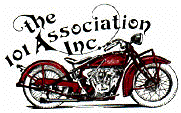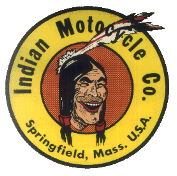Heres what I do.
Fit the disc stop to the outer cable :- Clamp outer in a vice with approx 1/2 inch protruding, drop disc over it, use a pair of side cutters to unwind a turn and a half, hammer this coil flat against disc and cut off excess leaving one complete turn flattened against disc, this won't pull out.
Feed inner thru hole in bars near headstock, and use this as a guide for the outer. Have a friend pull on outer stretching it slightly while you fit small clips up tight against handlebar, this will remove all slop from outer.
pin should be a light press fit into barrell, some may need a slight adjustment, they normally have a slight taper so one end will feed in easier. put a 90 degree bend in inner with a tail just under half length of pin, for clean bend use vice and small hammer.Feed that tail thru small hole and push pin thru, sandwiching tail in the groove. May need pressure in vice and socket on one end to force thru. make sure it is even both sides. You may have burred up the barrell doing this, file to clean up, as these will affect action.
There may be burrs on the inside of handlebar slots, remove these with fine file taking care not to open op slot, burrs will cause snatchy action, wide slot will cause slop.
Now feed inner down outer using white grease liberally. Fit twistgrip with internal spiral over bar and wind it on. Now tighten up ring and check for play. some new grips may jam as the return on the end of the twistgrip is too thick, I have had to turn down up to 60 thou off them to stop them jamming. Some may be too thin, this will cause slop, Greers sell a shim kit.if you have a smooth action now, disssemble, fill up liberally with white grease and put back together.
Before fitting rubber handgrips, check depth, usually tight fit and often 1/4 inch to short, leaving unsightly gap between rubber and bar. Increasing depth a touch is not difficult, there is up to an inch of solid runner there. Find an appropriately sized endmill but in lathe chuck and trun at low speed,pushing grip on, CARE NEEDED HERE> .You will need to drill a small hole in the centre of the solid grip end only as deep as you need to remove rubber, to allow mill to cut, as the centre of the mill bit which does not cut will stop contct with the rest of the rubber.
Don't cut cable to length until you are sure routings and free play are correct, leave tails of inner as long as possible at the carb or mag end, often people cut them short and put a 90 bend in them just past ferrule, then find they need adjustment. They cables shuld be adjusted so that full advance on mag or trhottle fully closed on carb is just before full movement of handgrip, a little extra legth will add pressure to carb closing or full advance being achieved. Some fiddling may be requires to get full movement of throttle disc, push disc shut with screwdriver before adjusting cable. Fully closed obviously more important than fully open :)
The leather bale prtectors are great, without them the cable will remove all paint from headstock in a couple of hundred miles.
Let me know how you go, or if anything needs clarifying, its pre morning coffee here.
Tim


